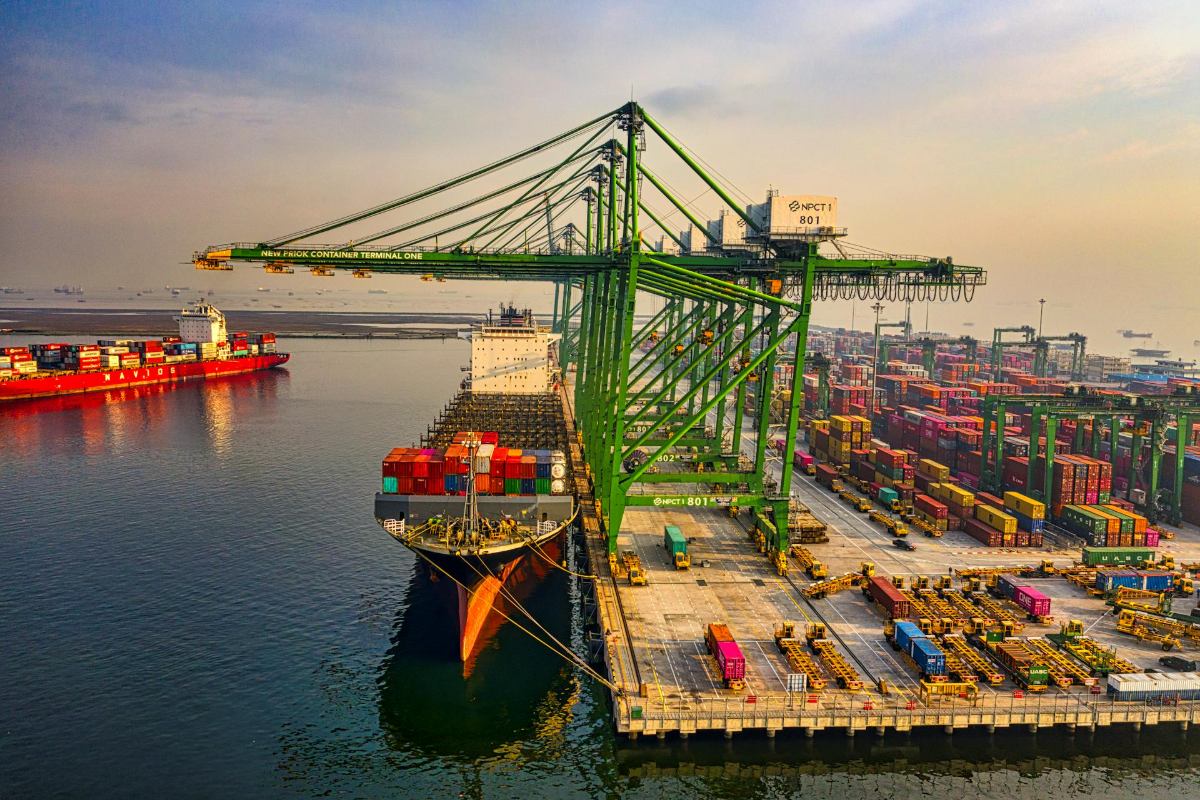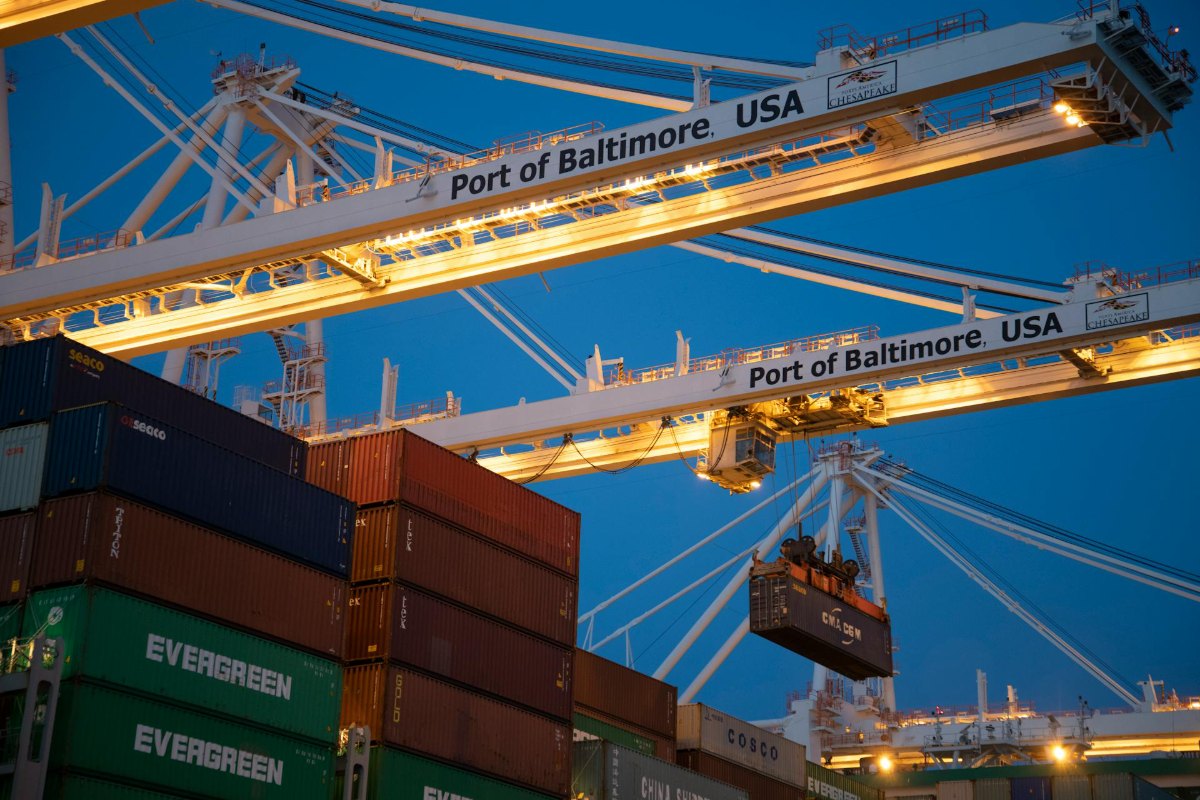
As the US pivots sharply toward protectionism under the second Trump administration, Vietnam finds itself at the epicentre of a trade policy earthquake.
However, with coordinated action and long-term vision, the country could turn crisis into opportunity. In this commentary, Dr Chu Thanh Tuan, Associate Program Manager of Undergraduate Business Programs at RMIT University Vietnam, shares his expert insight into how the US tariff shift could reshape Vietnam’s export landscape, unsettle markets, and test the nation’s economic resilience, while outlining the urgent actions required by policymakers and businesses.
On 2 April 2025, US President Donald Trump announced a sweeping tariff framework during what the White House called a “Liberation Day” proclamation. The new policy will impose a baseline 10% tariff on nearly all countries effective 5 April, followed by targeted increases of up to 30-40% from 9 April, with a potential 46% rate applied to Vietnamese goods.
 Dr Chu Thanh Tuan of RMIT University Vietnam says Vietnam is at the frontline of the most protectionist US trade shift in recent memory. (Photo: RMIT)
Dr Chu Thanh Tuan of RMIT University Vietnam says Vietnam is at the frontline of the most protectionist US trade shift in recent memory. (Photo: RMIT)
This move represents the most protectionist shift in US trade policy in recent memory, and Vietnam stands directly in the firing line.
The direct impact on Vietnam is significant. The country’s largest export sectors, including textiles and garments, electronics, footwear, seafood, and furniture, are all heavily reliant on the US market. With nearly 30% of Vietnam’s total exports destined for American consumers, the introduction of tariffs ranging from 10% to 40% could erode price competitiveness, trigger order cancellations and compel businesses to either absorb margin losses or shift production elsewhere.
However, the consequences are not confined to direct exporters. This morning, a neighbour of mine, a CEO of a yarn manufacturing company that does not export to the US, said: “We don’t ship to America, but this tax is crushing our industry.”
His concern reflects broader anxiety across the business community – that tariffs imposed on Vietnamese exports to the US may trigger disruptions throughout supply chains, raise input costs, and reduce demand across a wide range of domestic sectors.
These compounding effects culminated in a sharp market reaction. On the morning of the announcement, the VN-Index dropped nearly 80 points, equivalent to around 6% by 10:50am, highlighting just how deeply these tariff measures are shaking not only exporters, but also broader investor sentiment and business confidence across industries.
The indirect impacts are just as concerning. They include:
Supply chain disruptions, as US buyers reduce orders or demand price renegotiations
Reduced foreign direct investment, particularly from manufacturers focused on export-driven growth
Ripple effects on domestic sectors such as logistics, finance, packaging, and compliance
Currency volatility, stemming from investor uncertainty and macroeconomic pressure
As these challenges unfold, Vietnam now faces a critical juncture which demands a strategic and coordinated response to safeguard its economy and maintain its position in global trade.
In light of the escalating impacts of the US tariff measures, Vietnam is now navigating a tightrope. The country’s record US$123.5 billion trade surplus with the US in 2024 makes it a prime target for the so-called “reciprocal” tariffs. While Vietnam has benefitted from supply chain shifts out of China, this very success has also drawn increased scrutiny.
 Vietnamese exporters and manufacturers are bracing for the impact of escalating US tariffs, prompting urgent calls for strategic response. (Photo: Pexels)
Vietnamese exporters and manufacturers are bracing for the impact of escalating US tariffs, prompting urgent calls for strategic response. (Photo: Pexels)
Importantly, Trump’s tariff decisions are driven not only by economic considerations but also by political messaging – a demonstration of strength aimed at his domestic base. Vietnam’s response, therefore, must be both tactical and strategic, spanning immediate diplomatic efforts, mid-term restructuring, and long-term institutional reform.
Short-term actions: Speed and coordination
To mitigate the immediate fallout, both government and businesses must act quickly and cohesively. The following actions should be prioritised in the coming days and weeks:
Immediate diplomatic efforts: On the morning of 3 April, Prime Minister Pham Minh Chinh chaired an urgent meeting with leaders of key ministries in response to the US decision to impose a 46% tariff on Vietnamese goods. At the meeting, he ordered the formation of a rapid response task force and directed relevant ministries to coordinate and collect input from major exporters. In the upcoming meetings led by Deputy Prime Minister Ho Duc Phoc during his current visit to the US, as well as in subsequent inter-ministerial discussions, it is crucial for Vietnam to emphasise its strategic economic role for US companies operating locally and to propose targeted mitigation measures by sector to prevent widespread fallout.
Emergency business planning: Vietnamese companies must build short-term contingency plans for multiple tariff scenarios – 10%, 20%, 30%, and beyond. These plans should include price adjustments, cost restructuring, renegotiating delivery terms, and assessing impacts on contracts signed under pre-tariff conditions.
Narrative and framing: Vietnam should actively communicate that the trade surplus primarily stems from foreign-invested enterprises operating in Vietnam, with a significant portion of profits returning to US-based firms. This reframing is crucial in mitigating the perception of unfairness that fuels protectionist policies.
Medium-term actions: Structural flexibility
Once immediate risks are managed, attention must turn to reducing structural dependencies and enhancing economic agility. In the medium term, the following measures are key:
Diversifying export markets: Vietnam should strengthen its trade ties within the CPTPP, EVFTA, and RCEP to tap into large consumer markets with preferential access. Countries such as Japan, Canada, and the European Union (EU) present strong alternatives to the US market.
Adjusting production chains: Increasing local value-added steps and reducing dependence on intermediate goods from China – which are often flagged in US customs inspections – will be critical. Upgrading origin tracing systems and investing in compliance technology will support this effort.
Exploring cross-border production: Partial assembly or packaging in “friendly” countries such as Mexico – which benefits from USMCA terms – may reduce direct exposure to tariffs while maintaining US market access.
Long-term resilience: Policy and institutions
Finally, long-term resilience will require institutional reform to ensure Vietnam is better equipped to handle future global trade tensions. Two areas should be prioritised:
Customs enforcement and transparency: Vietnam must strictly enforce rules of origin to prevent the transshipment of Chinese goods through its territory. US trade authorities are highly sensitive to this issue, and failure to act could result in further penalties.
Permanent trade monitoring team: Vietnam should establish a trade risk response unit that involves both public and private sectors. This team would monitor developments, model economic impacts, and facilitate coordinated policy responses in a timely and strategic manner.
Integrating these institutional mechanisms will allow Vietnam to shift from reactive policymaking to proactive, forward-looking governance. This enables the country not only to weather the current storm, but also to strengthen its role in the global trading system.
To formulate an effective response, it is essential to view this tariff escalation through a strategic lens. President Trump’s typical approach is to lead with shock – announcing steep tariffs of 30%, 40%, or even 60% – and then use those threats as leverage to negotiate more favourable terms. The real aim is often to make a 10% baseline appear moderate and acceptable in comparison.
 The new US tariff playbook under Trump reflects a deliberate strategy of shock and negotiation, requiring Vietnam to act early and assertively. (Photo: Pexels)
The new US tariff playbook under Trump reflects a deliberate strategy of shock and negotiation, requiring Vietnam to act early and assertively. (Photo: Pexels)
Recognising this tactic is critical. Rather than reacting with panic, Vietnam must respond with clear-eyed, coordinated strategy. Delays or hesitations could be interpreted as passivity, weakening the country’s negotiating position. Instead, Vietnam should act early, assertively and constructively – pursuing exemptions or reductions through targeted diplomacy and mutually beneficial trade concessions.
This moment presents more than just a test of resilience; it is also a potential turning point. Vietnam is entering one of its most complex trade environments in decades. Yet with the right approach, this disruption could serve as a catalyst for long-term transformation.
A strategic path forward should therefore include:
Government-led diplomacy at the highest level
Private sector agility and risk planning
Public messaging to both US and domestic audiences
Long-term reforms to improve trade transparency and institutional capacity
If these elements are aligned and implemented decisively, Vietnam can not only weather the storm but also emerge stronger, more competitive, and better positioned for a diversified and sustainable future.
Story: Dr Chu Thanh Tuan, Associate Program Manager of Undergraduate Business Programs at RMIT University Vietnam
Masthead image: aerial drone - stock.adobe.com
Stepping outside the classroom can be intimidating, but competitions offer more than just trophies. They sharpen skills, build awareness, and open doors to real-world opportunities.
As Vietnam gears up for the public holidays from 30 April to 4 May, and with the summer travel season just around the corner, RMIT academic Dr Daisy Kanagasapapathy warns that online scams targeting tourists are likely to spike.
Empowered by the RMIT Vietnam Opportunity Scholarship, Ha Viet Tinh has not only fulfilled his dream of attending university but also realised a promise he made to himself four years ago.
Dr Alrence Halibas, a Digital Marketing researcher from RMIT Vietnam, explains why brands should see space tourism not as sci-fi, but as a real marketing launchpad, especially for Vietnam’s Gen Z.